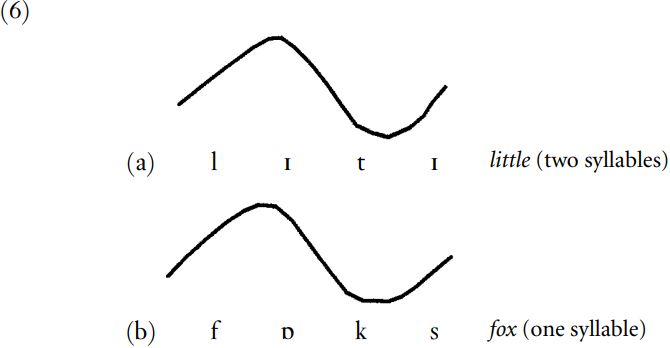


 Grammar
Grammar
 Tenses
Tenses
 Present
Present
 Past
Past
 Future
Future
 Parts Of Speech
Parts Of Speech
 Nouns
Nouns
 Verbs
Verbs
 Adverbs
Adverbs
 Adjectives
Adjectives
 Pronouns
Pronouns
 Pre Position
Pre Position
 Preposition by function
Preposition by function 
 Preposition by construction
Preposition by construction
 Conjunctions
Conjunctions
 Interjections
Interjections
 Grammar Rules
Grammar Rules
 Linguistics
Linguistics
 Semantics
Semantics
 Pragmatics
Pragmatics
 Reading Comprehension
Reading Comprehension|
Read More
Date: 2024-06-05
Date: 2024-04-20
Date: 2024-06-25
|
However, some other restrictions on possible clusters are not specific to English, but rather reflect universal prohibitions or requirements. The most notable phonological principle which comes into play here is known as the Sonority Sequencing Generalization, and governs the shape of both onsets and codas. Sonority is related to the difference between sonorants (sounds which are typically voiced, like approximants, nasal stops and vowels) and obstruents (oral stops and fricatives, which may be either voiced or voiceless). Sonorants are more sonorous; that is, their acoustic properties give them greater carrying power. If you stood at the front of a large room and said one sound as clearly as you could, a listener at the back would be much more likely to be able to identify a highly sonorous sound like [ɑ] than a sound at the other end of the sonority range, such as [t].
Our knowledge of acoustic phonetics and other aspects of sound behavior can be combined to produce a sonority scale like the one given in (3). Here, the most sonorous sounds appear at the top, and the least sonorous at the bottom. Some English examples are given for each category.

Natural classes of sounds which function together in phonological processes are often composed of single or adjacent levels on the sonority hierarchy. For instance, English liquids and nasals can be syllabic, and these are the closest consonants to the vowel series (with the exception of the glides; and as we have seen already, we might say that [j w] do have syllabic counterparts, namely the high vowels).
The general rule expressed by the Sonority Sequencing Generalization is that syllables should show the sonority curve in (4).

The nucleus constitutes the sonority peak of the syllable, with sonority decreasing gradually towards the margins. In syllables like trump, prance, plant, the outermost consonants, at the beginning of the onset and the end of the coda, are at the bottom end of the sonority scale, while less marginal consonants, adjacent to the vowel, are also closer to the vowel in their sonority value. Lack of adherence to the Sonority Sequencing Generalization therefore rules out onsets like *[lp], *[jm], *[ɹg], although onsets with the same segments in the opposite order are found in play, muse, grey. Similarly, universal sonority restrictions mean English lacks *[pm], *[kl], *[mr] codas, although again clusters with the opposite order, which do show descending sonority, are attested in lamp, silk, harm (the last in rhotic accents only).
Like many rules, the Sonority Sequencing Generalization has an exception, and this involves the behavior of /s/. The onset clusters in spray, skew have the sonority profile in (5)

That is, the marginal consonant [s] has a higher sonority value than the adjacent voiceless plosive: yet there is no question of drawing a syllable boundary here and recognizing two syllables within the same word, as [s] is not one of the English consonants which can become nuclear, or syllabic. The same problem arises in codas. We would normally use a sonority pattern like the one in (6a) to tell us that a syllable division should be made, giving two syllables in little, but one in lilt. However, codas with both orders of clusters involving [s] are possible, as in apse and asp, or axe and ask; and the same sonority pattern in (6b) must be analyzed, contrary to the Sonority Sequencing Generalization, as corresponding to a single syllable.

These exceptions are at least not random: cross-linguistically, violations of the Sonority Sequencing Generalization always seem to involve coronal consonants (those produced using the tongue tip or blade, and typically alveolars), and especially /s/. Such consonants seem to behave exceptionally in a number of ways, and have to be excluded from various phonological generalizations, though it is not yet quite clear why.
|
|
|
|
دراسة يابانية لتقليل مخاطر أمراض المواليد منخفضي الوزن
|
|
|
|
|
|
|
اكتشاف أكبر مرجان في العالم قبالة سواحل جزر سليمان
|
|
|
|
|
|
|
المجمع العلمي ينظّم ندوة حوارية حول مفهوم العولمة الرقمية في بابل
|
|
|